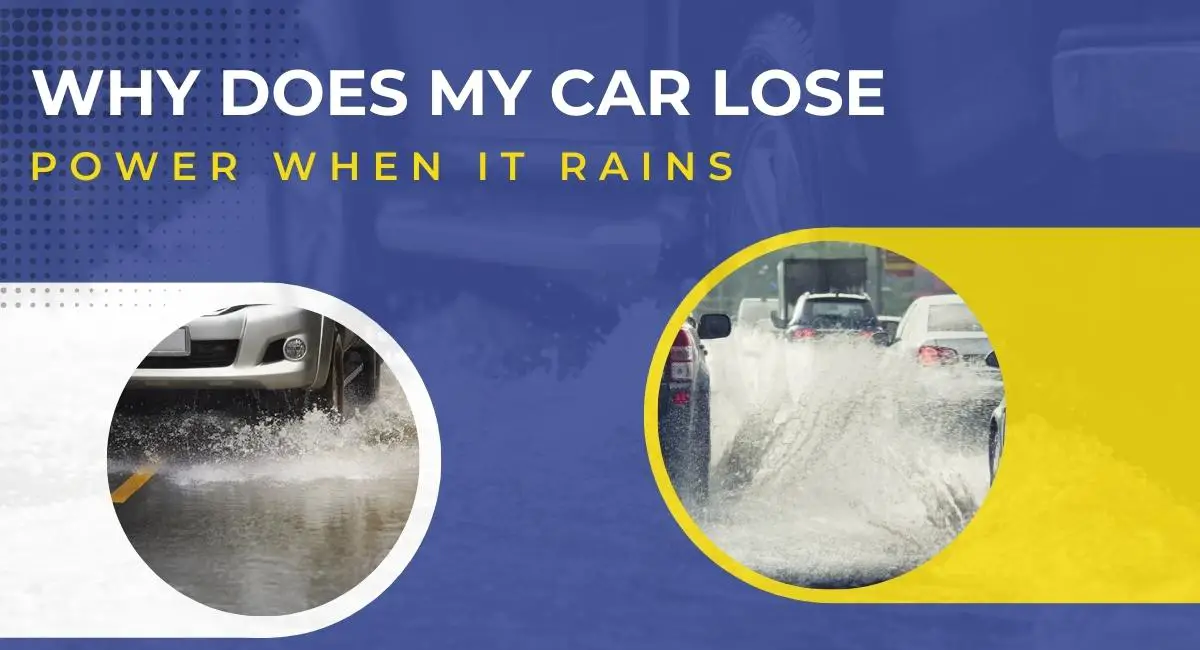It’s a rainy day, and you’re cruising down the road, windshield wipers working overtime to clear your view. Suddenly, your car stutters, the acceleration drops, and you’re puzzled and frustrated. Rain can significantly impact a car’s performance, leading to inconvenient breakdowns and safety risks.
The connection between car performance and weather conditions, particularly rain, can be complex and puzzling. In essence, rain can significantly affect various systems in your car, leading to a drop in power output and overall performance. It can be unsettling, not to mention inconvenient, especially if you rely on your vehicle for daily commuting or long-distance trips.
In this article, we delve into the intricacies of this issue, providing a thorough understanding and viable solutions to ensure your car’s optimum performance, rain or shine. From the electrical problems that may arise after precipitation to the reasons behind the sudden loss of power, we’ll explore it all.
Understanding the Basics of Car Functionality
To understand why a car might lose power in the rain, it’s crucial first to comprehend the basic mechanisms that make a vehicle operate. A car isn’t just an engine on wheels; it’s a complex machine with numerous systems working harmoniously. Here, we’ll explore the five key systems: the electrical, ignition, air intake, exhaust, and fuel systems.
1. Electrical System
The electrical system in a car acts as the lifeblood of all electronic functions, including headlights and windshield wipers. The system comprises an intricate network of wires, fuses, and switches powered primarily by the car battery. Additionally, it provides the necessary electricity for the ignition system to start the engine and the fuel pump.
2. Ignition System
As the name suggests, the ignition system initiates the car’s starting process. At its heart are the spark plugs, which create a spark that ignites the air-fuel mixture in the engine’s combustion chambers. This combustion creates a mini explosion that pushes the engine’s pistons, setting in motion the process that ultimately moves your car. Apart from spark plugs, other components like the distributor, ignition coil, and ignition switch play critical roles in this system.
3. Air Intake System
The primary role of the air intake system is to guide air into the engine, where it combines with fuel to create the energy that powers your car. This system includes components like the air filter, which prevents harmful dirt and debris from entering the engine, and the mass airflow sensor, which measures the air entering the engine to ensure the correct air-fuel ratio.
4. Exhaust System
Once the ignition of the air-fuel mixture and the harnessing of energy, waste gases remain in the combustion chamber. The exhaust system’s job is to safely expel these waste gases from the car, reducing emissions, minimizing noise, and optimizing engine performance. The exhaust system comprises several components, including the exhaust manifold, catalytic converter, and muffler.
5. Fuel System
The fuel system’s job is to store and supply fuel to the engine. It comprises the fuel tank, pump, filter, and injectors. The fuel pump moves fuel from the tank to the engine; the filter removes any impurities, and the fuel injectors spray the filtered fuel into the engine in a fine mist, allowing it to mix thoroughly with air for efficient combustion.
These systems, though distinct, are deeply interconnected. Their flawless interaction ensures the car’s smooth operation, but a problem in any of these systems can result in noticeable performance issues. In the following sections, we’ll explore how rain and moisture can interfere with these systems, leading to power loss.
Role of Weather Conditions in Car Performance
Varying weather conditions can impact your vehicle’s performance in different ways. In particular, rain and high humidity can affect multiple systems within your car, leading to decreased performance or even total power loss. Rain can infiltrate various parts of a car, and if the vehicle is not adequately equipped to handle this excess moisture, it can result in mechanical and electrical issues.
Detailed Analysis of Car Power Loss in the Rain
Rain, while necessary for life and often seen as a refreshing break from dry weather, can pose some challenges for your vehicle. While modern car design endures various weather conditions, excessive rain can interfere with certain key systems, leading to a loss of power. Let’s delve deeper into how rain affects these systems:
Electrical System
Despite being a critical element for life, water is a known adversary of electrical systems. It can infiltrate various components, causing electrical shorts or corrosion over time. Water can find its way into the vehicle’s electrical circuits when it rains, potentially leading to major issues like erratic lights, periodic electronic functions, or complete power loss.
Ignition System
The ignition system relies heavily on the accuracy and precision of its components to generate the spark necessary for combustion. Unfortunately, moisture can be a formidable foe for this system. When elements like the spark plugs, distributor cap, or rotor become damp, it could hinder their ability to create an effective spark, leading to what is known as an engine misfire. It can manifest as a loss of power, rough running, or stalling.
Air Intake System
The air intake system, which allows air to flow into the engine, can also be negatively affected by rain. If the system ingests excessive water, it could result in a condition known as hydro-locking. In hydro-locking, the presence of water instead of air inside the cylinders prevents the engine from running properly, leading to an instant loss of power. It is more likely to occur in heavy rains or when driving through deep puddles.
Exhaust System
When water enters the exhaust pipe and makes its way into the muffler or catalytic converter, it can cause these components to cool down rapidly. This sudden temperature change can result in structural damage, such as cracking. More immediately, water trapped in the exhaust system can cause the engine to run less efficiently or lose power.
Fuel System
Water and fuel don’t mix. When rainwater infiltrates your fuel system, it can harm your engine’s performance. It’s due to the water and fuel separation within the fuel tank, leading to a supply of water-contaminated fuel to the engine. It typically results in sputtering, rough idle, or a decrease in power.
By understanding the intricate interplay of these systems and the role rain plays in their operation, you can better comprehend why your car might lose power when it rains. This knowledge also equips you to take proactive steps to prevent or address this issue, ensuring optimal vehicle performance irrespective of the weather.

Car Electrical Problems After Rain
What causes a car to lose power? Even after the rain has stopped, your car can still experience electrical issues. It is often due to residual moisture trapped within the electrical system. These can cause various problems, including decreased fuel efficiency, inconsistent acceleration, and unresponsive controls. Here are some potential issues that may arise:
Erratic Lighting: You might notice your headlights, tail lights, or interior lights flickering or dimming. In some cases, these lights might fail altogether.
Engine Issues: Water intrusion can lead to misfires or the engine not starting at all due to issues with the spark plugs or ignition system.
Electronic Controls: Your car’s electronic controls, such as power windows, seats, or the radio, might become unresponsive or behave erratically.
Sensor Malfunctions: Moisture can cause sensor malfunctions leading to false readings. For example, your car’s dashboard might display incorrect speed, fuel level, or engine temperature.
Battery Drain: In severe cases, electrical shorts caused by moisture can lead to a significant drain on your car’s battery, leaving you with a dead battery.
Identification and Troubleshooting of Power Loss Causes
Recognizing the symptoms of power loss is the first step in resolving this issue. Some common signs to watch out for include sluggish acceleration, stalling, hard starts, and flickering dashboard lights. If you notice any of these symptoms during or after a rainstorm, inspecting your car’s electrical and ignition systems for moisture or damage is a good idea. However, if the problem persists, you may need professional help.
Prevention Measures for Car Power Loss in Rain
Preventive measures are crucial for maintaining your car’s performance in the rain. Regular maintenance, including periodic inspections of the electrical and ignition systems, can go a long way in preventing rain-related power loss. Additionally, keeping your car protected during rainy weather, such as using a car cover or parking in a garage, can help avoid water-related damage.
Important Read: Enhancing the Speed of Your BMW 320i: A Comprehensive Guide
Conclusion
Understanding why a car loses power in the rain involves acknowledging the possible impacts of moisture on your vehicle’s electrical, ignition, air intake, exhaust, and fuel systems. Regular maintenance, proper protection during wet weather, and early detection of potential issues are key to ensuring your car runs smoothly in all conditions. With the information in this guide, you’ll be able to handle the challenges that come your way, providing a safer and more enjoyable driving experience, rain or shine.
